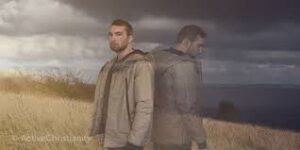
SIMULTANEOUS LIVES
Some of us may not understand how we can Live many lives at the same time. I will try to explain. The energy of oneself that encompasses the greater portions of the actualized self is capable of branching-out portions of itself into other lives to experience them. You have an infinite amount of energy that we could be using to achieve this. The physical manifestation of self in our time frame is only but a minute portion of the totally of who we are. The diagram that I drew up to help us focus on our point of power would somewhat illustrate this. As always,we choose how many lives we wish to experience at any given time. Each time our energy makes the transition from a physical body to our home dimension, some of that energy is returned to the whole if we choose. We may bring as much energy as we feel that we need into each life, This would be evident in some of our great leaders, who have brought greater amounts of energy into those lives because it would be needed to accomplish their objectives.

If we can envision this clearly, we will experience lives in the same way as that The Creator, distributing different portions of our total energy into different lives to be experienced whenever and however we wish. It is also quite possible for us to experience more than one life in a given timeframe. Separate souls on different aspects of the evolutionary path. Of these simultaneous lives, some portions may be in one part of the world living out their lives, while others that are quite unaware of, may be living out their lives in another part of the world or even on other planets for that matter. All is possible, yet we have focused on our perceived reality as the only one we have or will ever have. It is simply not the case.

The following illustration will help us visualize the concepts I have presented here in its very limited sense as there is far more to the greater reality of self than this limited diagram. Envision the total energy of oneself as we branch out to all of our simultaneous incarnational lives. The diagram illustrates envisioning a matrix of energy as the main portion of our soul’s energy, the portion that we have brought into this life and other portions in our other simultaneous lives that we are not focusing on in this current life. We are at present using a portion of our energy to focus in this timeframe. All of our simultaneous lives are still continuing to exist. If we wish to affect them, we will need to focus on sending our healing energies from this point of power to them. In doing so, we are able to branch out to the rest of our lives, thus affecting our past, our present and our future. The information that we send in a positive light with an abundance of love, will affect those lives in a most beneficial way and further our own spiritual evolution.

FROM OUR POINT OF POWER NOW, WE ARE ABLE TO DIRECT OUR THOUGHT ENERGIES TO THESE OTHER LIVES, AFFECTING THEM AS WELL. SEND YOUR MESSAGES TO ALL OF THEM IN A LOVING WAY. THIS WILL GREATLY ENHANCE OUR SOUL’S EVOLUTION AND THE EVOLUTION OF OUR PLANET INTO THE PEACEFUL FOURTH DIMENSION. DO THIS IN MEDITATION FOR FIVE MINUTES THEN MOVE ON WITH YOUR DAY. DO THIS DAILY. THIS POWERFUL EXERCISE WILL ENHANCE OUR LIVES AND OPEN OUR CONSCIOUSNESS TO THE GREATER REALITY OF OUR BEING.

OTHER SELVES AND OTHER REALITIES
Often times in the dream state other realities will be revealed to us and in the dream state we communicate with our other selves all the time. We are not able to focus on more than one timeframe for very long though in the waking state, due to the portions of the brain that we refer to as gray matter. Certain portions of the brain could handle the simultaneous material, but only for a limited time. In other words, we cannot live and experience all of our lives at once in our dream/waking state in our current physical body. With the expansion of our consciousness these areas of the brain are being activated. It is quite possible for us to experience some of our multiple selves with meditation and hypnosis. Some individuals are capable of tapping into past and future lives as we think of them in the hypnotic state. We are always learning from the experiences of our probable selves being the thoughts and impulses that we did not act upon. Even though we did not actualize those thoughts with our actions in this point of power, nevertheless they are real and are still being carried out in the same manner that our life is as we know it.

Let me give you an example here: suppose at a young age, you are a woman or maybe a man and you either had a child or fathered a child. Then that child either died or maybe was given up for adoption. Either way, you were not part of the child’s experience still lives on as a probable reality that you did not manifest into action but nonetheless the energy of the thoughtform still continued on. If you want to experience that probably reality for your self in this point of power, imagine to yourself starting at the beginning of the experience when you made whatever decision. Now you are experiencing another probable reality within your life that you did not actualize into form in this point of power. You can take this as far as you want to and eventually it will lead you to another probable outcome of one of your probable selves. These probable selves are all extensions of your consciousness. They are experiences of your greater energy source that you have not focused on or acted out in your present point of power. However, they are as valid as the present focused reality in which you are engaged as you read this blog.

Now our conscious mind and our biological nature are of one. They cannot be separated and they function harmoniously together. The thoughts of our conscious mind directly affect our biological self. Our conscious mind directs the activity of the self and allows it the freedom to move around our environment. It is the directive needed to maintain our existence from millisecond to millisecond. All the cells in our body rely on it to carry out their orders for our state of being. So our thoughts, for they also have the impetus to seek out their own fulfillment. They are expressed through our desires to make them into our reality, to experience them through the creative development of our creaturehood. As the cells in our body respond to the stimulus of our thoughts and the manifestations of our actions, we are co-creating our reality with the many probable realities available to us, thus expending our consciousness. Since we have free will, we will only experience and believe what we want to, but as we awaken to the endless possibilities of our reality we will be presented with a greater challenge to those beliefs. We will be opening the doors to the vast richness of our being and in doing so other areas of self will start to unfold and reveal themselves to us.

OUR INNER REALITY
In coming together as a species, not as a race or races, but as humans together in a collective consciousness for the happiness and health of all and acceptance of all, the alignment begins and so does the healing, the healing of the wounds of mankind from the separation of selves. There is no separation from us and every living thing throughout the Universes and the consciousness of All That Is. The God consciousness is within us, not outside of us the way we believe it to be. It is internally integrated into every cell of our being. It cannot be removed and set up on a cloud to look down upon us in judgment of us. The only judgment comes from self’s limited perceptions of who he is and his expectations of self based on the acceptance and opinions of others. As one breaks away from his/her exterior reality and belief systems and starts to focus on his/her inner reality, he/she will find most if not all the answers that he/she is searching for. In a way, the inner reality provides all the stimulus and information we need to experience the outer reality. We do not need interference of external stimuli that is not grounded in the fulfillment of the happiness of the soul. In discovering the scientific facts about our biological nature, that we hold to be the reality of our being, external stimuli so to speak, we remove ourselves farther and farther from the knowledge we so desperately wish to attain. That knowledge lies within the consciousness of every living, not within the physical framework. When we truly understand the uniqueness of consciousness, then we will begin to experience the answers that we are searching for.

If we did not feel the need to manipulate and destroy our outside reality and instead focused on the wisdom of our inner reality, there would be no need for wars or devastation on our planet. We would be consciously in balance with nature and all living things including oneself. At one time on this planet this is how we lived in our ancient civilizations, but we grew away from this in pursuit of other stimuli. We essentially threw oneself out of balance and have been trying to get back ever since. When reading this blog, it is my sincerest desire that all of us will begin the awakening and start to enjoy the benefits of the vast library of knowledge that is inwardly available to us and start to look at our lives with a renewed interest in our planet and the other life forms that have so willingly sacrificed their lives for our unnecessary pursuit of external knowledge. All the answers lie within. All we have to do is listen. Below is another exercise to assist us in understanding and healing other portions of our energy.

EXERCISE
HEALING YOUR OTHER SELVES
If I may ask you to look at it in this light: Imagine yourself standing in front of a large wall approximately thirty feet long and fifteen feet high. Now, on this wall starting from the left and moving to the right are markers, say every two inches, stacked in rows with approximately one foot between them from upper to lower. The wall may have several thousand markers. To make this simple we will say one thousand markers. Each marker is a life play that you wish to experience with a script of probable realities co-created by you and others. They do not necessarily have to be experienced in any order. Starting at the top left end would be timeframes from your past as you perceive it and move progressively to the right and across and then down again and across always moving to the right. Each move to the right moves into a timeframe ahead of the one prior and eventually far into the future as you perceive it, say thousands of our years ahead of your life as you know it now. What I want you to do in this exercise is focus on your point of power in this timeframe. I would like you to send thoughts of loving and healing energy to all of the markers on the wall. These markers again represent lives that you may or may not be participating in. The idea here is to use your point of power in the NOW to heal your simultaneous lives and bring them into the light.

The wall also represents the many lives available to you when you make the transition of your energy from the Earth plane to the home dimension where you did your life review. As I mentioned earlier, you enter through a holographic matrix into several of those lives to determine the ones you would like to incarnate into. This happens more than you are aware of as souls step into probable lives on our Earth planet. They are able to manifest themselves briefly into lives through the use of the hologram. It is only an illusion to the souls already on Earth when they appear, but nonetheless quite real within the framework of illusion on the Earth plane. When the souls sheds the body of a life completed, the soul may choose any of the other lives that has carefully created to experience. It is like going to school, one grade completed and then you move on. So it is with the life and death experience of soul.

You may, as you look at this wall, go back or forward in time to experience these lives, since there is no time outside the framework of the Earth plane. Timeframes were set in place for the benefit of soul on Earth. It would be too much for the soul’s total energy to focus on experiencing just one of the lives at one time. The total sum of energy of your being would be too much for one physical body to withstand. The soul focuses a portion of its energy in as many lives as it chooses, each one focusing on its own point of power in that timeframe to fully experience that life and in doing so is constantly altering the experiences of the other lives. The other selves are not aware of it consciously, however all influence each other’s experiences.

YOUR LIFE PLANS
There are many probable realities in each life and we will choose those we wish to manifest as our perceived reality in any given life. The other probable realities will still be experienced, but we will not be focusing on them. For instance, when the lessons of our current life are learned and experienced, they can be done with if we choose not to experience them again. Some of those same lessons will be written into other lives as well. Since those lessons were learned and experienced, they no loner need to be manifested in the other lives. Usually we will incarnate into a life with at least three or four lessons that we wished to master the learning experience from. We have free will and since there are thousands of lives to choose from, we may choose to focus on another life or lives with a completely different set of circumstances. All choices are made by us with our free will.

Oftentimes there will be counseling from the elders of the Council as to which life would be appropriate for this portion of our energy to focus on the next time around, but even that is only advice and we will always have the freewill to choose. We do not have to focus on each and every one of the thousands of lives we have set up for oneself unless we choose to do so. Others may take our place if we wish to abandon one or many. We may do the same with other’s probable lives and step into situations that others souls have abandoned. Most often this interplay is contained within the soul groups that we usually incarnate with. The majority of our life experiences are experienced within that same group, switching back and forth as mother, father, child etc. Many of these lives we have already focused on and experienced at this point in our evolution, so we will choose from the remaining ones where certain lessons and experiences still need to be mastered.

In gaining a clear understanding of the life/death process, mankind/womankind can erase his/her fears and embrace the transition of his/her energy with love. Our loved ones will be with us in what seems to be the blink of an eyes when we are not in a physical body and have returned to our soul’s home. Earth lives are quite short because of all the negativity and stress associated with our current evolutionary aspect of the Earth plane. It is necessary, for the soul would be too traumatized if life were any longer and would not wish to experience other lives. Many times this happens and the soul will wait what appears to be hundreds of Earth years to enter into another life or lives to focus upon.

These situations are unplanned, they are part of the will and plan of The Creator. Every probable reality in each life is planned with all involved within the group and even outside of the group. We share our lives with many of the same souls over and over again, for these souls are the ones closest to us and we all have agreed to experience these lives together to learn. Sometimes we incarnate with other portions of oneself incarnated with us, part of our total energy. Simultaneously living together in the same timeframe and sometimes in the same family, lessons are learned, so to speak, through oneself, with oneself. What we perceive to be our worst enemy may just be a part of our total energy and another extension of us.

As we look at others, we may be looking at a reflection of ourselves and at oneself. All is possible. Our energy is a very minute part of the infinite energy source of All that Is, nonetheless enough for this vast energy source to experience every emotion and life experience. No two souls will experience the same situation in the same way. Each will have its own interpretation of the experience even though the experience may appear to be identical. The energy of ALL That Is therefore is experiencing every facet of humanity and of other Universes through the manifestation of its energy into souls.

THOUGHT REALITY
As mankind/womankind desires tranquility and love on his/her planet so it will be brought forth. As we change our reality with our thoughts and abandon our fears, we will no longer be terrorized. Our thoughts are the most powerful energy in all of creaion for they create our experiences. They initiate the thrust of action on our part and manifest our experience into our reality. Knowing this, understand that our reality is what we create. The manuscripts of our religions project onto us the visions of heaven and hell. Mankind’s/womankind’s heaven and hell are his/her own projections ofactualized thoughtforms manifested into reality on the Earth plane. It is what he creates for himself/herself through his/her thoughts and actions that will determine his/her beliefs about his/her reality and whether he/she is living in his/her fel or his/her heaven.

What we manifest through our thoughts and beliefs we create for our perceived reality. It’s that simple. If we wish to live in fear and terror, we will. If we wish to live in joyous harmony with our planet and its beings, we will. Since we are moving into the unity of consciousness dimension, what we manifest by virtue of our thoughts will be instantly created for us. This is why it is imperative that our thoughts be purified. If we move into this dimension with thoughts of fear for example, then our fears will instantly be manifested into our reality. For some of us this could appear to be very frightening depending on what we have envisioned for ourselves.

Each time we catch oneself harboring negative thoughts, be consciously aware of them and remind oneself that we are working towards eliminating this kind of thinking. This isn’t going to happen over night, however with repetitive conscious reminders to oneself in each instance it will start to manifest itself into our daily reality. Before too long we will respond with positive thoughts to situations instead. For instance, someone may cut in front of you while driving and because of your old conditioning you may feel that they did it deliberately or whatever. Instead you may say to yourself, “This person just didn’t judge the distance too well or maybe they are a new driver.” A harmless positive thought instead of an angry negative thought. That’s all it takes to start reconditioning our thoughts. Granted there will always be some situations that will be hard to justify and we will have to do our best to find some good in it.

If we observe other individuals, we will notice that there are always some people who are happy, no matter what. It is because they have not subscribed to the fear-based belief system of our world. They have decided that they will experience their lives joyously and they will not let fear grip their reality. They are in control of their thoughts and most often negative thoughts would not even enter into their thinking. They will most often see only the positive outlook to any situation even if they have made it up in their minds. These individuals have already evolved themselves into a fourth-dimensional consciousness in many ways. They are walking among us. When we meet one of them we know it immediately because we are most likely drawn to them. They make us feel good and we like to be around them. They validate us and show their love for us without prejudice or fear of rejection. This is what it will be like for all of us in this dimension where there is no fear and no terror. Life will be joyously experienced for the happiness of all as our soul was meant to live. We will begin to learn the art of cooperation with others and the wonderful feeling of expressing the Divine qualities of our soul openly to the world.

As fears are erased we will be able to communicate with other LIght Beings throughout the Universes and share universal knowledge, for we will understand that The Creator or God if you call it that, wears many outfits, in many colors, to fully experience everything in the Universe that he wishes to. As we grow in the knowledge that is so rightfully ours and reawaken to ourselves, we evolve. If we ignore fear and do not understand and embrace it, then it will grow and become our reality. If we want peace, we will have it. Create it with our thoughts. Believe in it and believe in the power of our being to do so. This probable reality will indeed manifest itself if humanity would consciously come together and make this happen.

EGO VS. SOUL & SOUL VALIDATION
Now let us discuss the relationship of the ego to the soul. Many of our fears about death are based in the reality of the ego. They have no power in the soul’s reality. We have let the ego take control of our knowledge. The ego does not want to die, but the ego is not us, the soul is us. The ego is a manifestation of the mind experience. The ego separates our soul from its development. Consciously, with our perceived sets of beliefs, we have let the ego take over our thoughts. However, soul knows differently and in dream state is oftentimes living the life that we have consciously denied ourselves in the waking state. Our dreams are a great reflection of the many facets of soul’s experiences in this life that we are focusing on. Soul travels to all of them, i all timeframes during the sleep state. We are consciously unaware of it, however if we take the time to write down our dreams we may be surprised to see how much they can reveal to us.

The ego is very protective and will deny the soul’s reflection of itself through the body. It does not want to acknowledge the soul aspect of our being. It is only concerned with itself and the physical body in which it resides. As we open our eyes and begin to validate you-the-soul, our ego-self will do its best to foil those attempts by reminding us of our fears and doubts. It is a master at trickery and deception for it is ruled by the materialistic force of dark. For cons our soul has been incarnating over and over again always striving to reflect itself through the physical vehicle. The ego has stood in its way much of the time. To some degree our physical vehicle needs the ego for it has been useful in our survival. The soul and the ego must learn to cooperate with each other for the good of the total being. When that happens the soul will have finally mastered its vehicle and will no longer need to incarnate into it. That is the goal of the soul when taking on physical incarnations. The lessons you are to learn and experience from are always related in some way or the other to the ego. When the soul has mastered this aspect of its reality it will no longer be tethered to its lower dimension.

THE WALLS OF SEPARATION
The ego will do whatever necessary to invalidate the soul for it perceived its very existence to be threatened by the soul. The soul would not behave the way the ego does and it knows this. It is looking for validation in the physical body that it is lackig in the spiritual body. This causes many problems within our soul. Since our birth we have been invlidated in one way or the other. Our religions invalidate us with their dogma that we have subscribed to these beliefs. The Christ consciousness did not come here to die for our sins. We are not sinners unworthy of living our life. This is man’s/woman’s idea of himself/herself, projected onto the masses through the guise of religion. Our souls are full of love that radiates with brilliant light. The man-made/woman-made religious beliefs of being a sinner and unworthy invalidated us if we did not conform to their perceived sets of beliefs. As soon as we were able to communicate our desires as a child, the invalidation began and continued all through our lives in one form or the other. We are beautiful, bright, loving beings worthy of all that we desire. Mankind/womankind builds great walls of separation around himself/herself in the hopes of being invulnerable to his/her beliefs and fears. Our pent-up emotions eventually must be released and often they are in a variety of ways, either with disease of the physical being of in acts of uncontrolled negative aggression against others. We were not meant to live like this. We have created for ourselves such a whirlwind of fear and anxiety in our everyday lives that our life spans have actually shortened.

Without the medical advances that our scientists have made to keep us alive longer, many of us would be dying off much younger. It is quite possible for humans to live hundreds of years in future lives on the planet after we have mastered our fears. Our stress levels will be greatly diminished and we will be free to experience the beauty of our being and the wonders of our planet, other planets and their life forms. As we learn to live our life without dear, then we will truly have started to evolve our consciousness forward. Trust in ourselves and our future and we will open up to the wisdom of our truth. We will experience peace and joy and we will know the God wuth us.





































































































